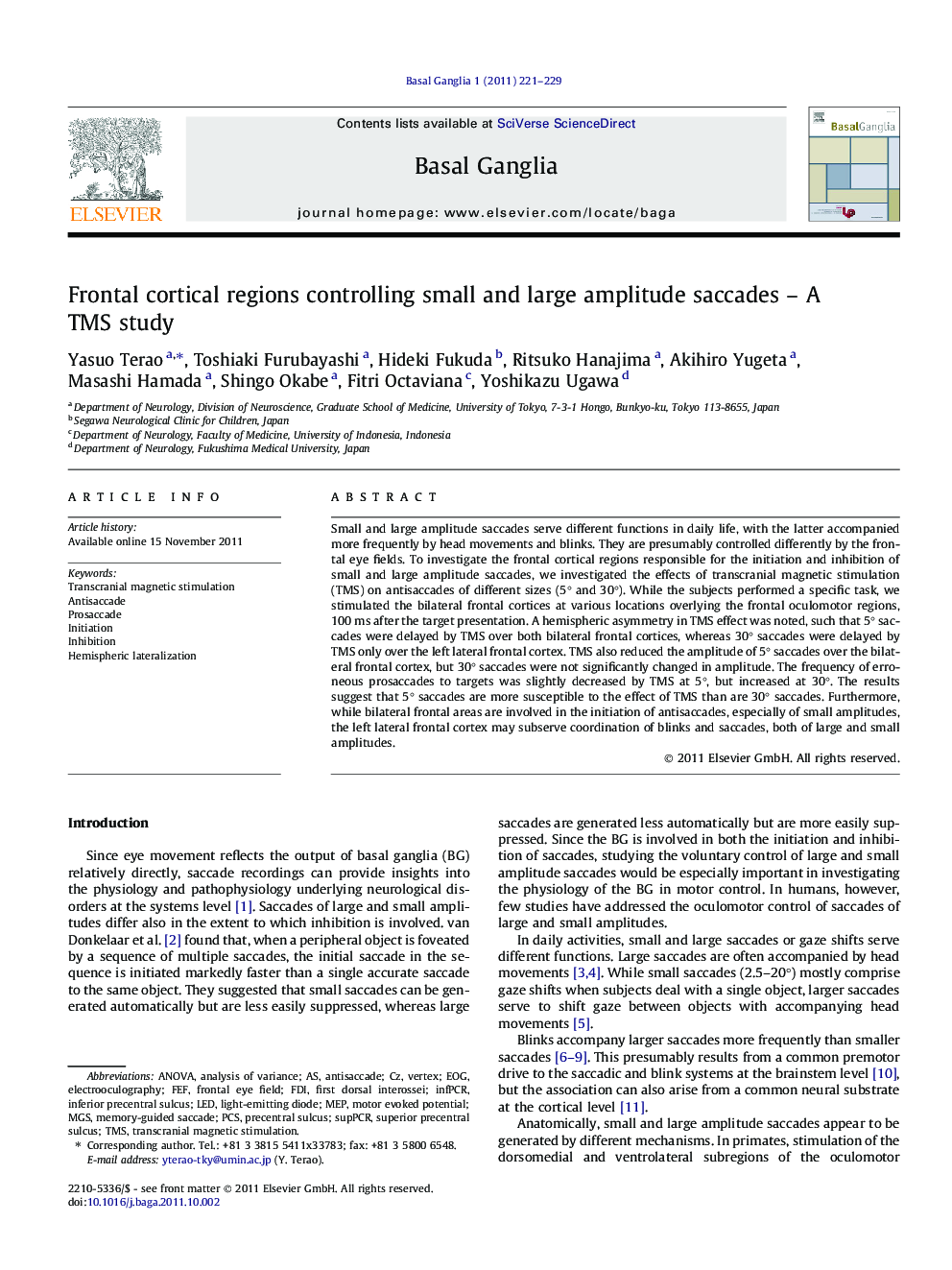| Article ID | Journal | Published Year | Pages | File Type |
|---|---|---|---|---|
| 3036023 | Basal Ganglia | 2011 | 9 Pages |
Small and large amplitude saccades serve different functions in daily life, with the latter accompanied more frequently by head movements and blinks. They are presumably controlled differently by the frontal eye fields. To investigate the frontal cortical regions responsible for the initiation and inhibition of small and large amplitude saccades, we investigated the effects of transcranial magnetic stimulation (TMS) on antisaccades of different sizes (5° and 30°). While the subjects performed a specific task, we stimulated the bilateral frontal cortices at various locations overlying the frontal oculomotor regions, 100 ms after the target presentation. A hemispheric asymmetry in TMS effect was noted, such that 5° saccades were delayed by TMS over both bilateral frontal cortices, whereas 30° saccades were delayed by TMS only over the left lateral frontal cortex. TMS also reduced the amplitude of 5° saccades over the bilateral frontal cortex, but 30° saccades were not significantly changed in amplitude. The frequency of erroneous prosaccades to targets was slightly decreased by TMS at 5°, but increased at 30°. The results suggest that 5° saccades are more susceptible to the effect of TMS than are 30° saccades. Furthermore, while bilateral frontal areas are involved in the initiation of antisaccades, especially of small amplitudes, the left lateral frontal cortex may subserve coordination of blinks and saccades, both of large and small amplitudes.
► Control of large and small saccades was studied by transcranial magnetic stimulation. ► Subjects performed antisaccades of 5 (small) and 30 degrees (large). ► Small saccades were more affected than large saccades in latency and amplitude. ► Small and large saccades were delayed over the bilateral and left frontal cortices. ► The findings suggest different control of large and small amplitudes.
